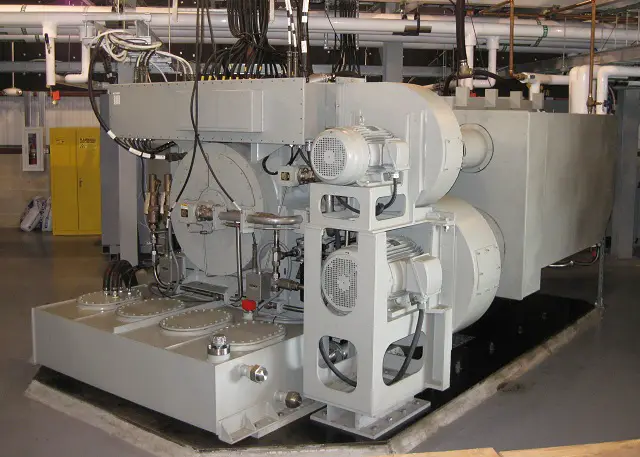Breaking news
U.S. Navy completes Electromagnetic Aircraft Launch System (EMALS) shared generator testing.
| 2013
| |
|||
| a | |||
Naval Forces News - USA |
|||
| U.S. Navy completes Electromagnetic Aircraft Launch System (EMALS) shared generator testing | |||
The U.S.
Navy’s future carrier aircraft launch system concluded a unique
test event today earlier than planned. The Aircraft Launch and Recovery
Equipment Program Office (PMA-251)’s Electromagnetic Aircraft
Launch System, (EMALS), completed shared generator testing at Joint
Base McGuire-Dix-Lakehurst, N.J. EMALS is replacing the current steam catapult system on aircraft carriers, beginning with the Gerald R. Ford (CVN 78). |
|||
 An F-35C Lightning II test aircraft piloted by Lt. Christopher Tabert launches for the first time from the new electromagnetic aircraft launch system. The new launch system will be installed on the aircraft carrier USS Gerald R. Ford (CVN 78). (U.S. Navy photo by David Sckrabulis/Released) |
|||
“It is important that we ensure proper sharing
and operation of the generators at the land-based facility prior to
testing the full four-catapult system onboard CVN 78, reducing risk
to the ship,” said George Sulich, EMALS integrated team lead.
With EMALS, the aircraft is attached to a shuttle that is propelled down the length of the catapult track by an electromagnetic field produced by the linear motors. The motor generator stores the system’s energy in the inertia of its rotor and releases that energy upon initiation of the aircraft launch. EMALS consists of six subsystems working together and sharing components to power the four catapults on the ship. The test site only has one catapult so, up to now; the system has only had to control one launcher. |
|||
 The Electromagnetic Aircraft Launch System (EMALS) motor generator stores energy in the inertia of its rotor and releases that energy upon initiation of the aircraft launch onboard carriers. EMALS completed shared generator testing at Joint Base McGuire-Dix-Lakehurst, N.J., today. EMALS is replacing the current steam catapult system on aircraft carriers, beginning with the Gerald R. Ford (CVN 78). (U.S. Navy photo) |
|||
After completing the system functional demonstration
phase in November 2012, the EMALS team readied the site to replicate
a four-catapult ship environment. The testing simulated generator-sharing
for multiple catapults by launching dead-loads, or weighted sleds.
“As EMALS successfully completes another test phase, I am confident we are providing the fleet with a reliable and efficient system that will revolutionize the way we launch aircraft from the Navy’s newest class of carriers,” said Capt. Jim Donnelly, PMA-251 program manager. Sulich attributed the team’s ability to team start and finish formal shared testing earlier than planned, to good preparation and coordination. One such preparation, he said, was using a ship representative controls lab, located at prime industry partner General Atomics’ facility in Rancho Bernardo, Calif., to conduct extensive modeling and simulation of the four-catapult system, ensuring the launch controls were set up correctly. “Instead of using the full-scale system at Lakehurst to test the full EMALS software suite, we used the ship-representative controls lab,” Sulich said. “By using the lab before we started formal testing, we were able to groom the software so that during commissioning testing we weren’t really discovering anything new.” EMALS is designed to expand the operational capability of the Navy’s future carriers to include all current and future carrier air wing platforms – lightweight unmanned to heavy strike fighters. It delivers necessary higher launch energy capacity; substantial improvements in system maintenance; increased reliability and efficiency; and more accurate end-speed control. The system’s technologies allow for a smooth acceleration at both high and low speeds, increasing the carrier’s ability to launch aircraft with less stress on the ship and its systems. From: NAVAL AIR SYSTEMS COMMAND, PATUXENT RIVER, Md. |


























